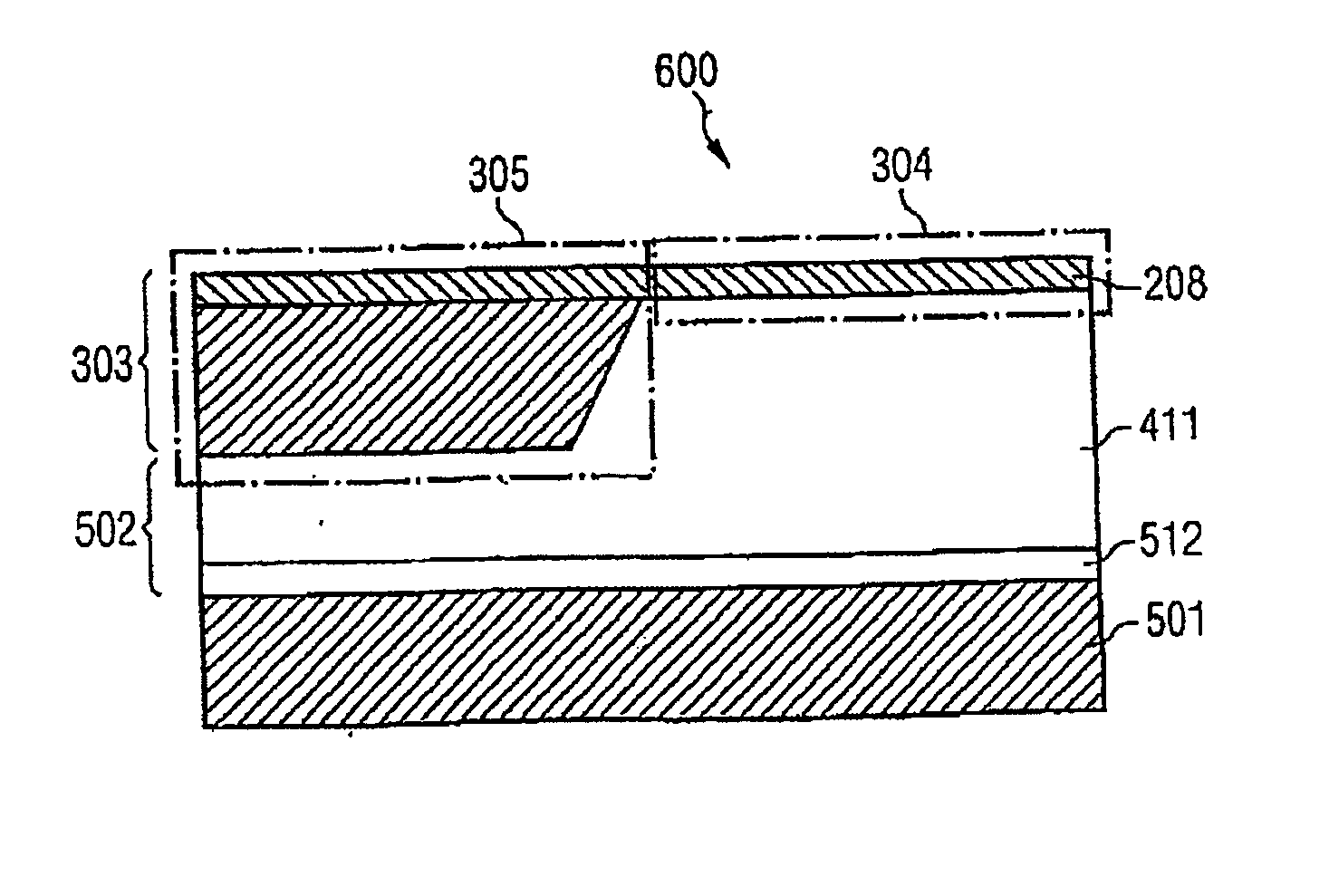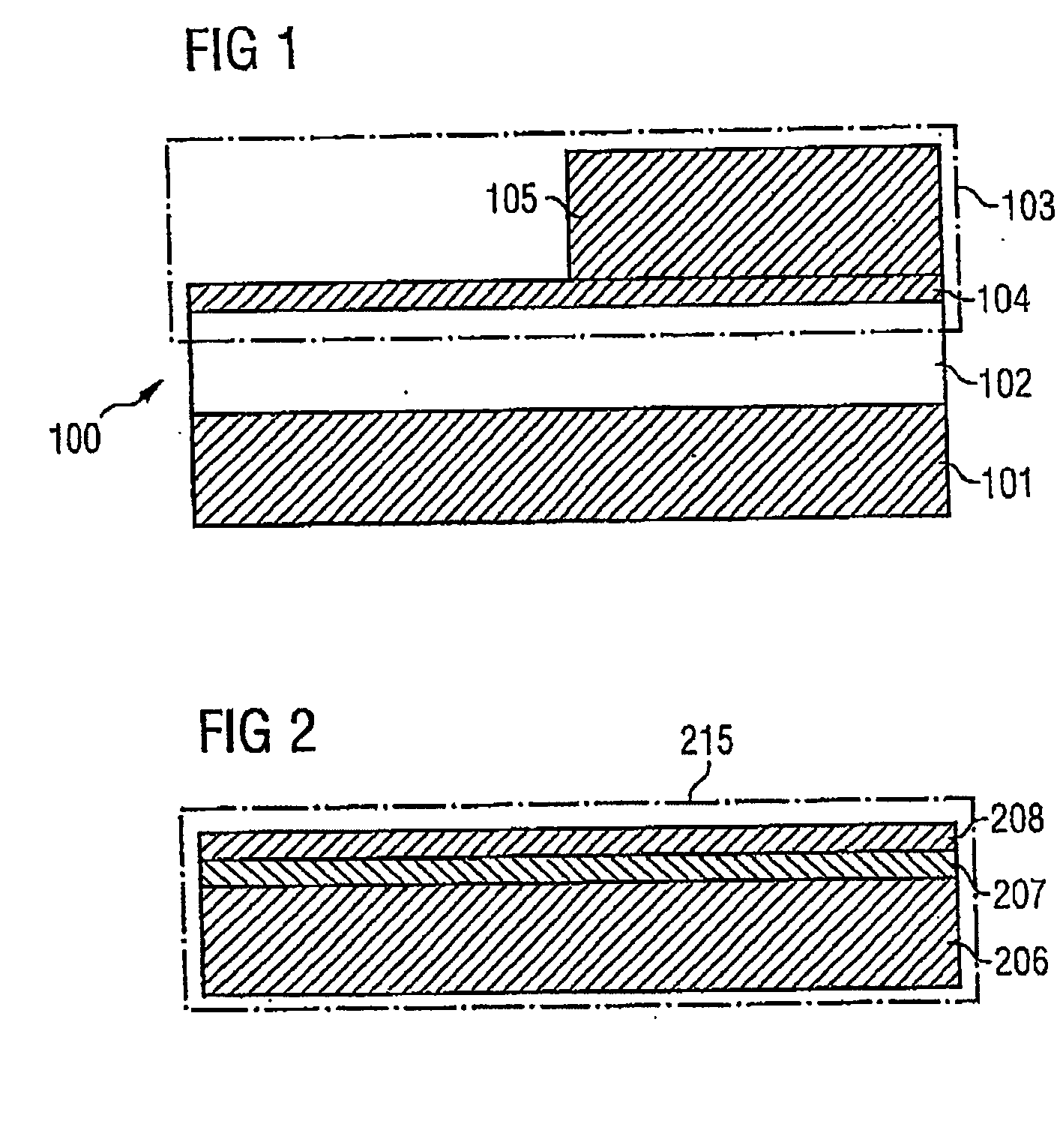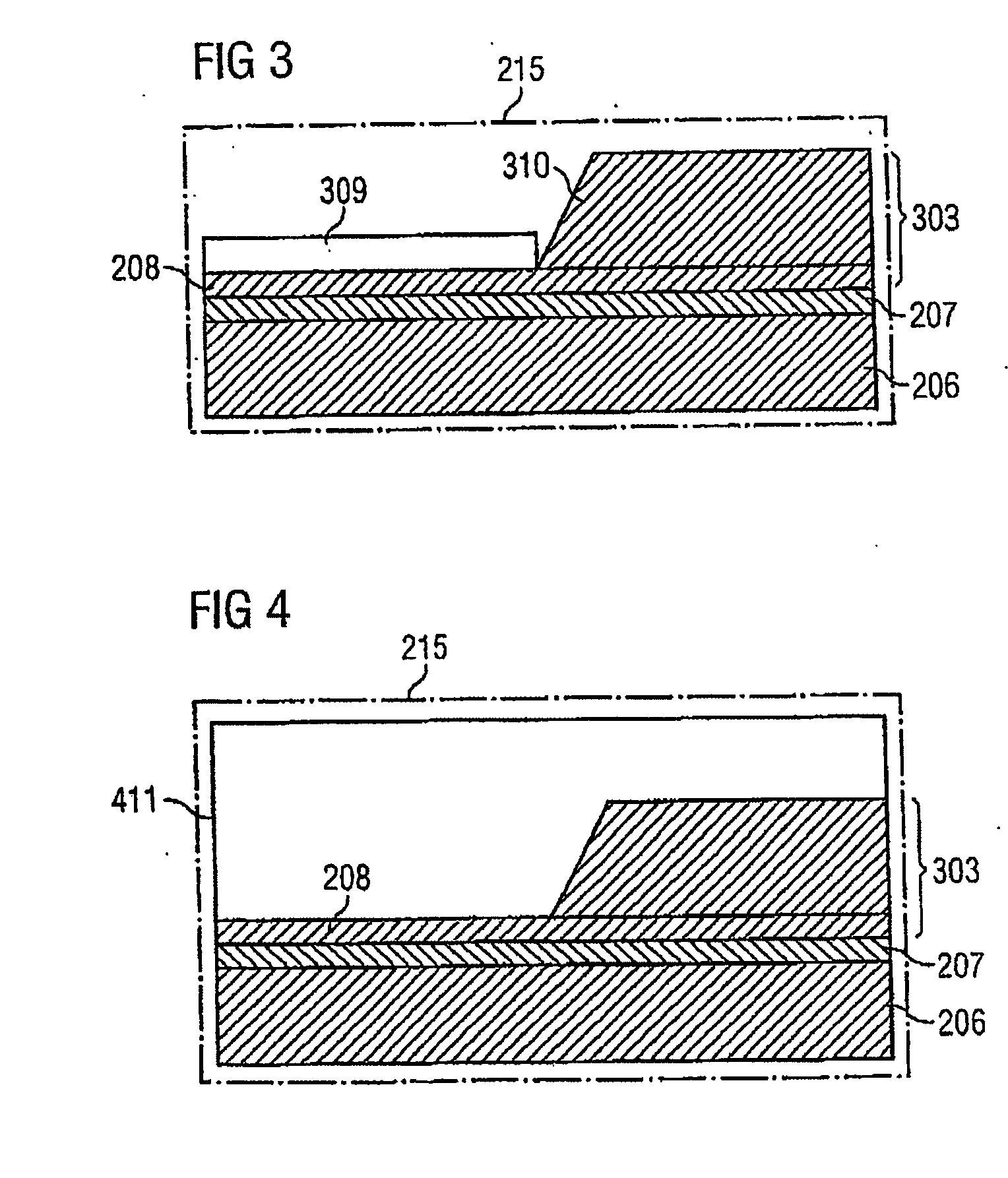Substrate and method for producing a substrate
a substrate and substrate technology, applied in the direction of basic electric elements, electrical apparatus, semiconductor devices, etc., can solve the problems of deterioration of the electrical properties of mos transistors, insufficient volume for forming pocket regions in thin-film soi technology, and inability to meet the requirements of substrate production,
- Summary
- Abstract
- Description
- Claims
- Application Information
AI Technical Summary
Benefits of technology
Problems solved by technology
Method used
Image
Examples
Embodiment Construction
[0098]FIG. 2 shows an auxiliary carrier substrate 215 having an auxiliary carrier layer 206 made of silicon. A layer 207 made of porous silicon is applied on the auxiliary carrier layer 206 made of silicon. A thin first semiconductor partial layer 208 made of silicon is applied on the layer 207 made of porous silicon. The thin first semiconductor partial layer 208 has a thickness in the range of 5 nm to 30 nm. The thickness of the thin first semiconductor layer 208 is preferably 20 nm.
[0099]FIG. 3 shows the auxiliary carrier substrate 215 after further method steps, a protective layer 309 made of silicon oxide being applied on the thin first semiconductor partial layer 208. Said protective layer 309 is converted, i.e. patterned, into a masking layer by means of etching back the silicon oxide in partial regions of the auxiliary carrier substrate 215. In a further process step, after the removal of a resist layer, applied for the etching-back, in the regions of the thin first semicon...
PUM
 Login to View More
Login to View More Abstract
Description
Claims
Application Information
 Login to View More
Login to View More - R&D
- Intellectual Property
- Life Sciences
- Materials
- Tech Scout
- Unparalleled Data Quality
- Higher Quality Content
- 60% Fewer Hallucinations
Browse by: Latest US Patents, China's latest patents, Technical Efficacy Thesaurus, Application Domain, Technology Topic, Popular Technical Reports.
© 2025 PatSnap. All rights reserved.Legal|Privacy policy|Modern Slavery Act Transparency Statement|Sitemap|About US| Contact US: help@patsnap.com



